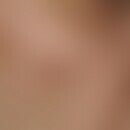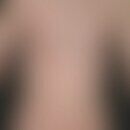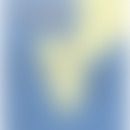Synonym(s)
DefinitionThis section has been translated automatically.
Atracurium is a drug (CAS number: 64228-79-1; molar mass: 929.15 g-mol-1, mean half-life about 0.33 h) belonging to the group of "Non-depolarizing muscle relaxants" (NDMR). This group of so-called "curare-like muscle relaxants" block the action of acetylcholine as antagonists of the NM nicotine receptor of the NM type on the motor end plate. The curare-like muscle relaxants are not absorbed as compounds with quaternary nitrogen (ammonium compounds) after oral administration. They must therefore be administered i.v. In finished drugs the benzenesulfonic acid salt (besilate) is used.
IndicationThis section has been translated automatically.
For i.v. use in surgical and other interventions and in intensive care. Atracuriumbesilate is used as an adjunct for general anaesthesia, as part of sedation to relax the muscles in intensive care medicine and to facilitate endotracheal intubation and artificial respiration.
You might also be interested in
Dosage and method of useThis section has been translated automatically.
Relaxation: Depending on the desired complete relaxation time, 0.3-0.6 mg Atracuriumbesilate/kg body weight (KG) i.v. can be administered. The duration of action is 15-35 minutes.
Intubation: After the i.v. injection of 0.5-0.6 mg atracurium besilate/kg bw, endotracheal intubation can usually be performed within 90 seconds.
Repetition doses: The complete neuromuscular blockade can be prolonged with repetition doses of 0.1-0.2 mg atracurium silate/kg bw. In general, the first maintenance dose must be given 20-45 minutes after the initial bolus, and further doses are given at 15-25 minute intervals as needed.
Cumulative effects in terms of neuromuscular blocking are not expected when these repetitive doses are administered. Spontaneous recovery occurs approximately 35 minutes after the end of complete relaxation, measured by the restoration of the tetanic response to 95% of neuromuscular function.
Spontaneous recovery: As soon as signs of spontaneous recovery are detected, the neuromuscular block caused by atracurium besilate can be rapidly eliminated without signs of recurrence by usual doses of cholinesterase inhibitors such as neostigmine or edrophonium - after prior or simultaneous administration of atropine or glycopyrronium bromide.
Undesirable effectsThis section has been translated automatically.
Note: The following categories are used for the frequency of adverse reactions:
- Very frequent (≥ 1/10)
- Often (≥ 1/100 to < 1/10)
- Occasionally (≥ 1/1,000 to < 1/100)
- Rare (≥ 1/10,000 to < 1/1,000)
- Very rare (< 1/10,000)
- Not known (frequency cannot be estimated on the basis of available data)
Diseases of the immune system: Very rarely severe anaphylactic and anaphylactoid reactions up to shock, circulatory failure and cardiac arrest
Diseases of the nervous system: Very rarely seizures
Heart diseases: often tachycardia
Vascular diseases: frequent hypotension (mild, temporary)*, reddening of the skin*.
Diseases of the respiratory tract: often bronchospasm, very rarely laryngospasm
ContraindicationThis section has been translated automatically.
Hypersensitivity to the active substance, cisatracurium or benzenesulfonic acid.
PreparationsThis section has been translated automatically.
Atracurium HEXAL® 25 mg/2.5 ml injection solution;
Atracurium HEXAL® 50 mg/5 ml solution for injection
Note(s)This section has been translated automatically.
To determine the individually required dose, neuromuscular monitoring is recommended when administering Atracuriumbesilate.




